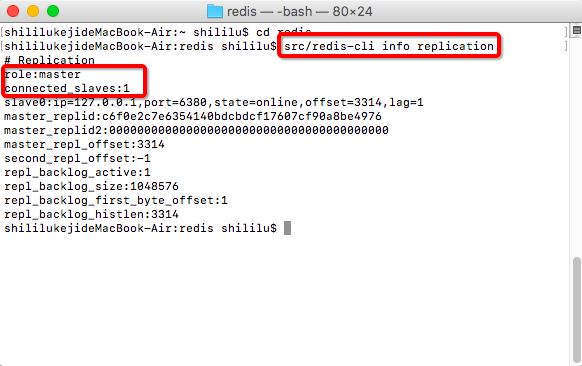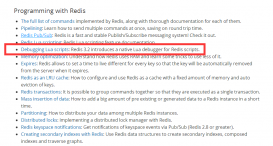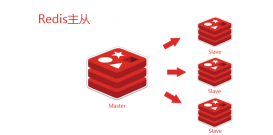业务描述
从一个博客数据库中查询所有的文章标签,然后存储到缓存(Cache),后续查询时可从缓存获取。提高其查询性能。
准备工作
初始化数据
初始化数据库中数据,SQL脚本如下:
|
1
2
3
4
5
6
7
8
9
10
11
12
13
|
DROP DATABASE IF EXISTS `blog`;CREATE DATABASE `blog` DEFAULT character set utf8mb4;SET names utf8mb4;SET FOREIGN_KEY_CHECKS = 0;USE `blog`;CREATE TABLE `tb_tag` ( `id` bigint(20) NOT NULL AUTO_INCREMENT COMMENT 'id', `name` varchar(255) NOT NULL COMMENT 'data_id', PRIMARY KEY (`id`)) ENGINE=InnoDB DEFAULT CHARSET=utf8 COLLATE=utf8_bin COMMENT='tb_tag';insert into `tb_tag` values (null,"mysql"),(null,"redis"); |
添加项目依赖
在jt-template工程的原有依赖基础上添加mysql数据库访问依赖,例如:
|
1
2
3
4
5
6
7
8
9
10
11
|
<!--mysql--><dependency> <groupId>mysql</groupId> <artifactId>mysql-connector-java</artifactId></dependency><!--mybatis--><dependency> <groupId>com.baomidou</groupId> <artifactId>mybatis-plus-boot-starter</artifactId> <version>3.4.2</version></dependency> |
添加数据库访问配置
在项目的配置文件(例如application.yml)中添加数据库访问配置,例如:
|
1
2
3
4
5
|
spring: datasource: url: jdbc:mysql:///blog?serverTimezone=Asia/Shanghai&characterEncoding=utf8 username: root password: root |
业务逻辑代码设计及实现
Domain对象设计
创建一个Tag类,基于此类型的对象存储Tag(标签信息),代码如下:
|
1
2
3
4
5
6
7
8
9
10
11
12
13
14
15
16
17
18
19
20
21
22
23
24
25
26
27
28
29
30
31
32
33
34
35
36
37
38
39
40
41
|
package com.jt.blog.domain;import com.baomidou.mybatisplus.annotation.IdType;import com.baomidou.mybatisplus.annotation.TableId;import com.baomidou.mybatisplus.annotation.TableName;import java.io.Serializable;/** * 标签类的设计 */@TableName("tb_tag")public class Tag implements Serializable { private static final long serialVersionUID = 4504013456197711455L; /**标签id*/ @TableId(type = IdType.AUTO) private Long id; /**标签名*/ private String name; public Long getId() { return id; } public void setId(Long id) { this.id = id; } public String getName() { return name; } public void setName(String name) { this.name = name; } @Override public String toString() { return "Tag{" + "id=" + id + ", name='" + name + '\'' + '}'; }} |
Dao 逻辑对象设计
创建Tag信息的数据访问接口,代码如下:
|
1
2
3
4
5
6
7
8
9
10
|
package com.jt.blog.dao;import com.baomidou.mybatisplus.core.mapper.BaseMapper;import com.jt.blog.domain.Tag;import org.apache.ibatis.annotations.Mapper;@Mapperpublic interface TagMapper extends BaseMapper<Tag> {} |
创建单元测试类,TagMapper中的相关方法进行单元测试,例如:
|
1
2
3
4
5
6
7
8
9
10
11
12
13
14
15
16
17
18
19
20
21
22
23
|
package com.jt.blog.dao;import com.jt.blog.domain.Tag;import org.junit.jupiter.api.Test;import org.springframework.beans.factory.annotation.Autowired;import org.springframework.boot.test.context.SpringBootTest;import java.util.List;@SpringBootTestpublic class TagMapperTests { @Autowired private TagMapper tagMapper; @Test void testSelectList(){ List<Tag> tags = tagMapper.selectList(null); for(Tag t:tags){ System.out.println(t); //System.out.println(t.getId()+"/"+t.getName()); } }} |
Service 逻辑对象设计
设计TagService接口及实现类,定义Tag(标签)业务逻辑。
第一步:定义TagService接口,代码如下:
|
1
2
3
4
5
6
7
8
9
10
|
package com.jt.blog.service;import com.jt.blog.domain.Tag;import java.util.List;public interface TagService { /** * 查询所有的标签 * @return */ List<Tag> selectTags();} |
第二步:定义TagServiceImpl类,代码如下:
|
1
2
3
4
5
6
7
8
9
10
11
12
13
14
15
16
17
18
19
20
21
22
23
24
25
26
27
28
29
30
31
32
33
34
|
package com.jt.blog.service.impl;import com.jt.blog.dao.TagMapper;import com.jt.blog.domain.Tag;import com.jt.blog.service.TagService;import org.springframework.beans.factory.annotation.Autowired;import org.springframework.data.redis.core.RedisTemplate;import org.springframework.data.redis.core.ValueOperations;import org.springframework.stereotype.Service;import java.util.List;@Servicepublic class TagServiceImpl implements TagService { //RedisAutoConfiguration 类中做的RedisTemplate的配置 @Autowired private RedisTemplate redisTemplate; @Autowired private TagMapper tagMapper; @Override public List<Tag> selectTags() { //1.从redis查询Tag信息,redis有则直接返回 ValueOperations<String,List<Tag>> valueOperations = redisTemplate.opsForValue(); List<Tag> tags=valueOperations.get("tags"); if(tags!=null&&!tags.isEmpty())return tags; //2.从redis没有获取tag信息,查询mysql tags = tagMapper.selectList(null); //3.将从mysql查询到tag信息存储到redis valueOperations.set("tags", tags); //4.返回查询结果 return tags; }} |
说明,假如将List存储到redis,此时Tag必须实现Serializable接口。
第三步:定义TagServiceTests单元测试类并进行单元测试,代码如下:
|
1
2
3
4
5
6
7
8
9
10
11
12
13
14
15
16
17
18
19
20
21
|
package com.jt.blog.service;import com.jt.blog.domain.Tag;import org.junit.jupiter.api.Test;import org.springframework.beans.factory.annotation.Autowired;import org.springframework.boot.test.context.SpringBootTest;import java.util.List;@SpringBootTestpublic class TagServiceTests { @Autowired private TagService tagService; @Test void testSelectTags(){ List<Tag> tags= tagService.selectTags(); System.out.println(tags); }} |
Controller逻辑对象设计
创建Tag控制逻辑对象,用于处理请求和响应逻辑,代码如下:
|
1
2
3
4
5
6
7
8
9
10
11
12
13
14
15
16
17
18
19
20
21
22
23
|
package com.jt.blog.controller;import com.jt.blog.domain.Tag;import com.jt.blog.service.TagService;import org.springframework.beans.factory.annotation.Autowired;import org.springframework.web.bind.annotation.GetMapping;import org.springframework.web.bind.annotation.RequestMapping;import org.springframework.web.bind.annotation.RestController;import java.util.ArrayList;import java.util.List;@RestController@RequestMapping("/tag")public class TagController { @Autowired private TagService tagService; @GetMapping public List<Tag> doSelectTags(){ return tagService.selectTags());//1.redis,2.mysql }} |
启动服务,打开浏览器进行访问测试。同时思考,我们是否可以在这个层加一个本地cache。
总结(Summary)
本章节重点是学习项目中缓存(Cache)的一种应用思想。
到此这篇关于Redis在SpringBoot工程中的综合应用的文章就介绍到这了,更多相关Redis在SpringBoot综合应用内容请搜索服务器之家以前的文章或继续浏览下面的相关文章希望大家以后多多支持服务器之家!
原文链接:https://blog.csdn.net/maitian_2008/article/details/120743729

















